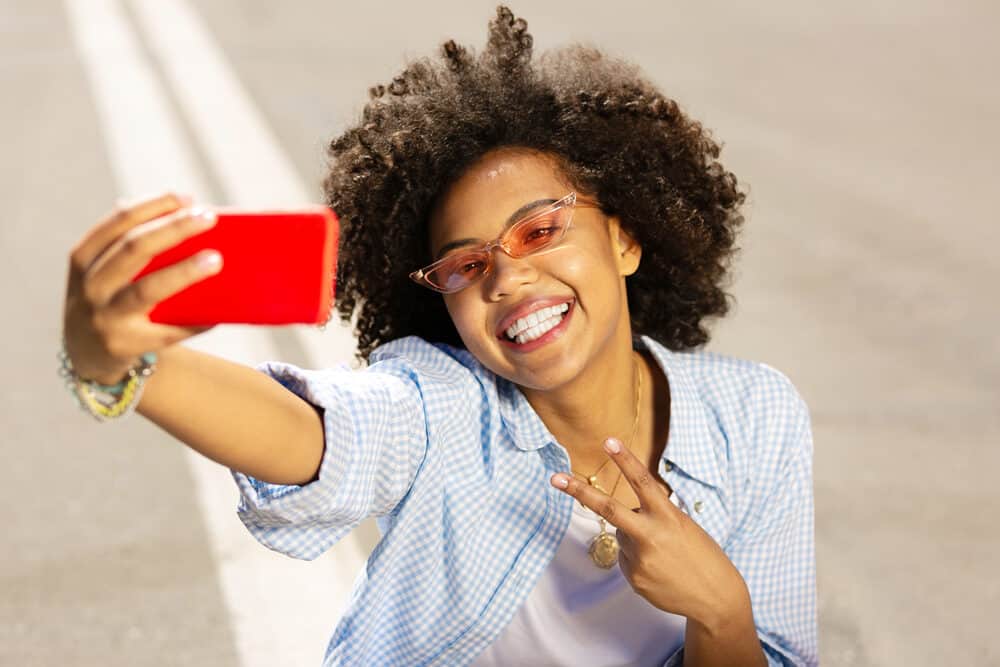
Over time, our curls, kinks, and coils undergo tons of changes. We go through periods of hair growth and costly setbacks as we experiment with countless styles and hair care techniques.
On top of that, a lucky few of us will experience involuntary hair color changes occurring without chemical hair treatments.
And if you’ve experienced color-changing hair (e.g., black hair turning brown), you can attest to the fact that it can be highly frustrating, especially when you’ve got no idea what could be causing it.
This article will explore some of the most common reasons why your hair is changing color by itself.
Table of Contents
Is Color-Changing Hair Normal?
Yes, color-changing hair is normal. And if you’ve experienced involuntary hair color changes, there is likely no need to be alarmed. People, both young and old, deal with this issue.
But, even after realizing that hair color change is normal, the most pressing question that people have is, “Why Is My Hair Changing Color by Itself?" Keep reading to learn some causes of changing hair color.

Why Is My Hair Changing Color by Itself?
Hair color changes can be caused by one or more of several reasons. Review the list below to learn about some of the most common reasons for hair color change.
1. The Sun
If you’ve ever noticed that your hair appears lighter or bleached in the summer months, the sun is to blame. This happens because the sun’s ultraviolet (UV) rays alter your hair’s melanin levels, which determine how dark or light it appears naturally.
When the hair is exposed to the sun for an extended time, the ultraviolet rays destroy the melanin pigment in individual strands. Hair lightened by the sun is permanently altered because once the melanin is destroyed, there is no reviving it.
Sun-bleached hair can be a nuisance for some people because it can make hair color appear uneven. But some people welcome this change and even supplement it with chemical dyes to aid in hair lightening.

2. Age
During their later years, people will notice their hair turning shades of gray, silver, or white. This is a normal part of aging and happens to a massive percentage of the population.
Unlike hair color changes caused by the sun, age-related hair color changes occur without any outside influences. To understand the process of hair graying, you need to know a little bit more about the structure of the hair and scalp.
Each strand of hair on our heads is composed of two main parts: the shaft and the root. The shaft is the visible hair strand that we see. The root of each hair strand keeps the hair attached to the scalp.
Tubes of tissue called follicles surround the root of each hair strand and contain a certain level of pigment cells. The pigment cells of each hair follicle produce melanin which gives the hair its natural color.
As we age, the pigment cells that hair follicles once produced begin to die over time. When there are fewer pigment cells in her follicles, melanin production declines. As a result, the hair strands lose their color and appear more transparent.

3. Hard Water
Hard water is the same water we drink, bathe in, and wash our hair with. But did you know that it’s also a minor cause of hair color change?
Hard water contains minerals like magnesium, copper, and calcium. When your hair is exposed to these minerals continuously, a film may form on the strands, causing the pigment to look faded and dull.
4. Swimming
Swimming exposes your hair to chlorine, which is a bleaching agent. The chemical alters the pigment in the hair, leaving your natural hair lighter in color.
Unfortunately, chlorine also damages the outer layer of the hair shaft called the cuticle, affecting the hair’s ability to retain new color through dyeing, bleaching, and other coloring procedures.

5. Pregnancy
During pregnancy, women go through hormonal changes that can affect their hair color. The hormones responsible for these changes are estrogen, progesterone, and cortisol. They can make hair look lighter or darker, depending on the person.
6. Heat Damage
Heat damage occurs when hair strands are compromised due to using heat styling tools. These tools can reach temperatures as high as 450 degrees Fahrenheit.
As you may be able to imagine, this extreme heat obliterates the hair shaft, leaving the natural hair tones faded and dull. In addition, hair that has already been chemically treated will suffer worse damage and extensive pigmentation loss.

7. Genetics
Not only do genes determine what color our hair will be (e.g. strawberry blonde color), but they also determine when we will lose our hair pigmentation.
This explains why some people grow gray hair when they are relatively young. Some people can begin losing hair pigment as early as their teenage years.
How To Keep Your Natural Hair From Changing Color
Hair color changes are inevitable in some cases, especially when they are caused by age and genetics. However, you can prevent your hair from changing colors by implementing smart hair maintenance practices. Use the tips below to prevent your hair from changing color by itself.

Limit Heat Styling
If you rely on heat styling as part of your daily hair care regimen, you should try to minimize your sessions to no more than once per week.
And when you do pick up that flat iron or curling wand, try your best to keep it on the lowest heat setting possible. Limiting heat styling will keep hair strands strong and elastic while preserving their natural pigment.
Wear a Swim Cap While Swimming
This seems like an obvious tip, but many people forget or don’t bother wearing a swim cap when swimming. This is because most people don’t understand how harsh chlorine is.
Covering your curls with a swim cap while swimming will prevent this chemical from damaging your hair and help you to retain your original hair color. For added protection, don’t forget to rinse or wash away any chlorine residue after swimming.
Use a Head Covering While in the Sun

If you’re not riding the sun-bleached hair wave, you’ll want to protect your hair whenever you’ll be out in the sun for longer than a minute or two.
Hats, scarves, and bonnets are all great ways to protect the hair from the color-damaging effects of the sun. No matter which head covering you choose, be sure to tuck all of your hair up under it.
Keep Your Hair Moisturized
When hair is adequately moisturized, it is less prone to damage. This means that heat, chemicals, and hair products will not be able to break down the hair shaft and destroy its pigment.
Water is one of the best moisturizers for the hair. Combine it with sealants such as oils, butters, creams, and conditioners for super-hydrated curls.
Invest in a Water Softening Treatment
Water softening systems remove calcium, copper, magnesium, and other minerals from tap water. This system purifies the water, allowing you to cleanse your hair without impurities that can dull your natural hair hue.
And as an added plus, when using a water-softening treatment, there will be a much lower chance of build-up forming on the hair and scalp, which will also help preserve your hair color.
- Will Coconut Oil Fade Dyed Hair?
- Stages of Bleach on Black Hair
- Why Is My Black Hair Turning Gold?
- Why Is My Hair Turning Red Naturally?
In summary, spontaneous hair color changes can be maddening, but there are ways to prevent them. By guarding your hair against color changes, you will simultaneously improve the overall health of your hair.
We hope that this article has supplied you with the tools you need to shield your hair from unwanted color changes.




